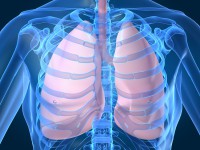
Former Good Morning America co-host Joan Luden shocked many fans when she recently posed bald on the cover of People magazine to promote cancer awareness. In an interview on Today, Joan, who lost her hair while undergoing chemotherapy for breast cancer, told fans, “We’re losing our hair in order to live and survive.”
Not an Easy Decision
While talking about her cancer journey and decision to bare her bald head in public, Joan admitted to Hoda Kotb that she was initially reluctant to pose for the magazine. “You just are never prepared for it,” she said about losing her hair during chemo. “You feel less like a woman. You feel less feminine. You feel less beautiful. You feel kind of embarrassed. You feel kind of like the ugly duckling. You lose a part of your sense of yourself.”
One More Loss
In the grand scale of things, you would think hair loss would be a small matter for cancer patients undergoing chemotherapy. But you have only to think how it feels to find a few gray hairs or notice a little thinning on top to realize how important our hair is to our appearance and sense of self. Its sudden loss during cancer treatment can be devastating to someone already struggling with the fear and loss that accompany cancer diagnosis.
A Better Solution
Non-toxic alternative cancer treatment offers a kinder, gentler way to combat cancer. Issels integrative immunotherapy works with your body to fight cancer. Our alternative cancer treatment battles cancer without the horrendous side effects, pain and embarrassing hair loss typical of chemotherapy. Find out more about the benefits of integrative immunotherapy at Issels.com.





